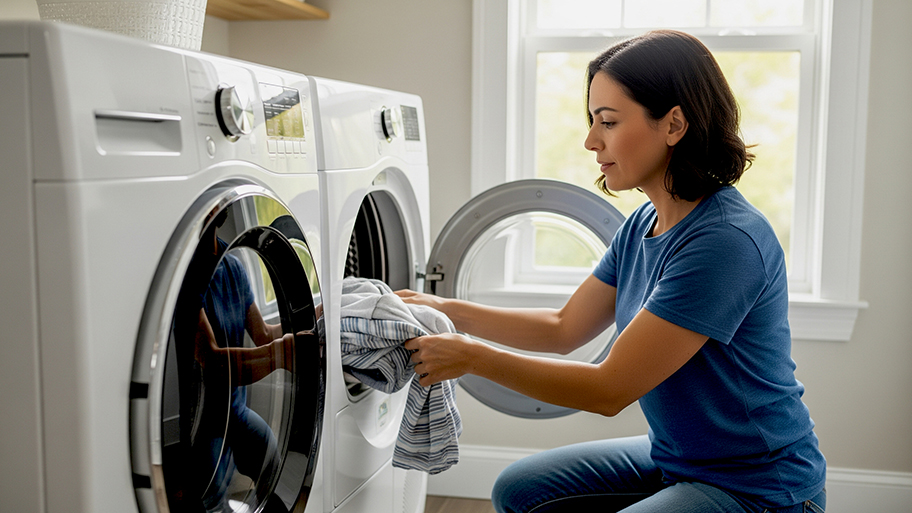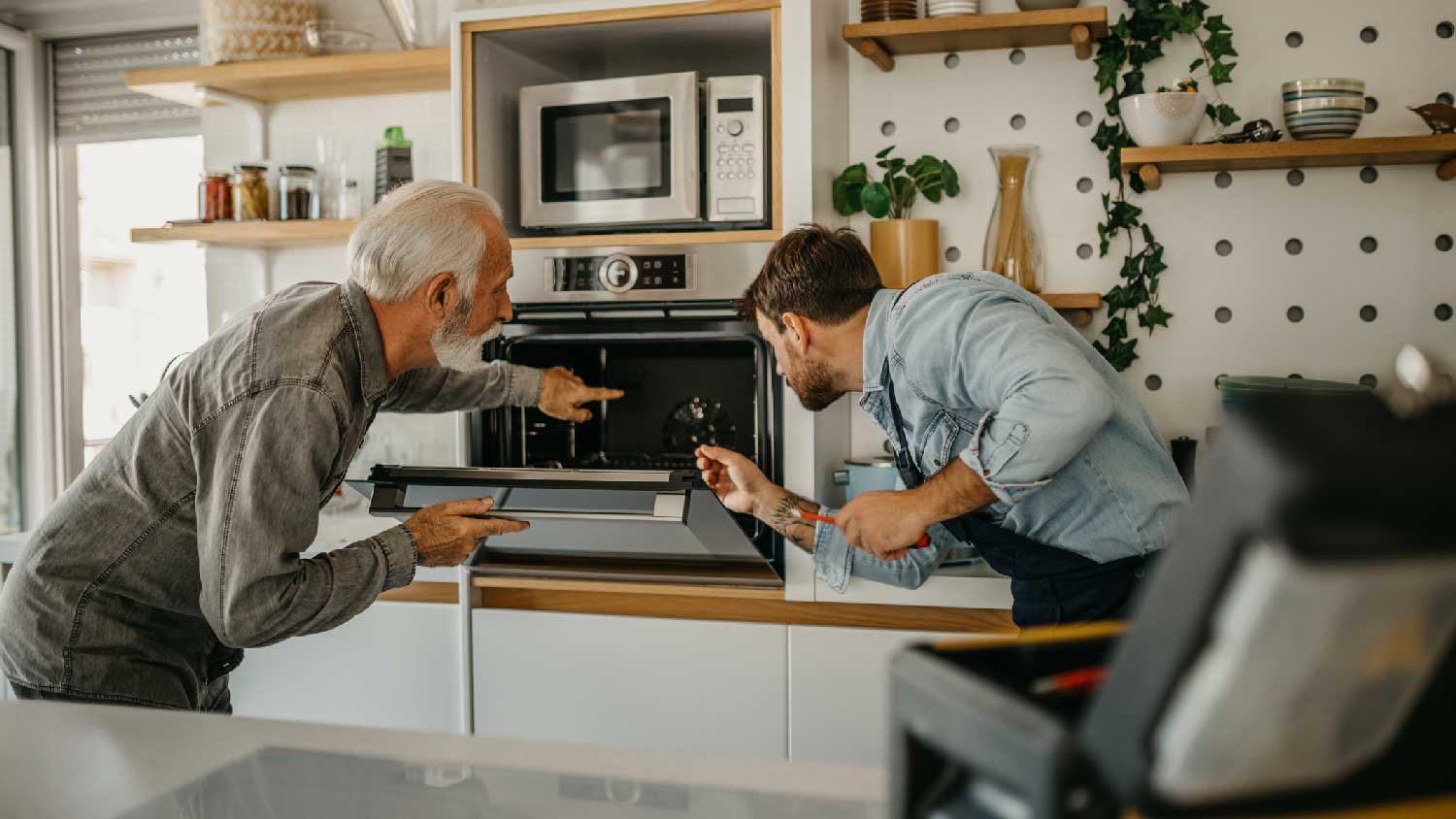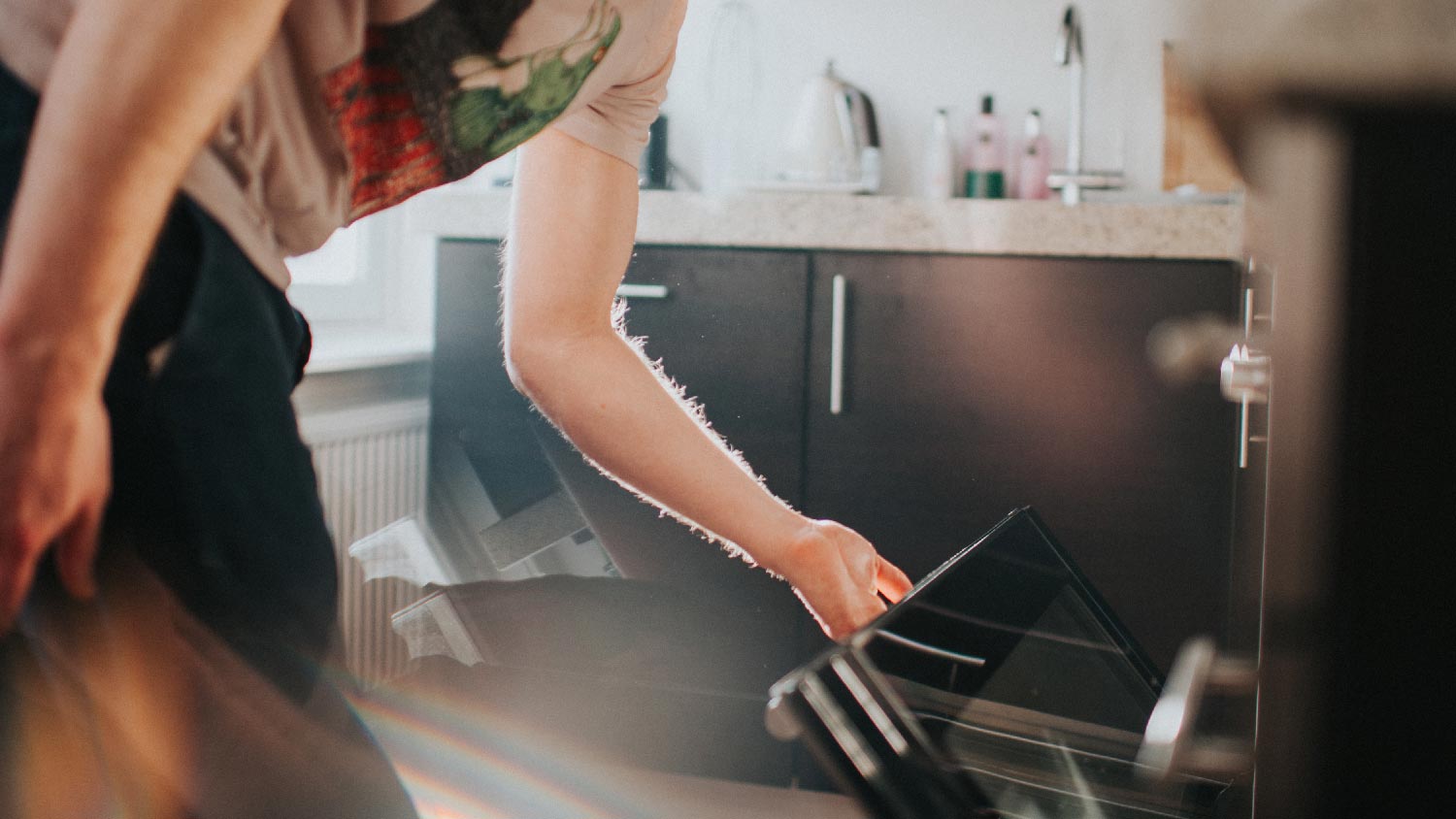
Replacing a dryer belt costs more than just the part unless you can DIY it. The labor cost can easily surpass 90% of the product cost, so if you are handy with tools, try it yourself first.
Don't let your oven give you the cold shoulder


An electric oven that’s not heating up may not have power due to a tripped circuit breaker.
A broken thermostat or broken heating element can also keep your oven from heating up.
Sometimes, simply replacing the door seal is enough to fix the problem.
If you've turned your oven on and nothing seems to be happening, you're most likely asking yourself "why is my electric oven not heating up?” There are a few possible causes, and often, some simple solutions.
Because electric ovens typically need 240 volts, your oven most likely has its own dedicated outlet and its own circuit. Occasionally, turning on the oven can cause the circuit to trip, cutting off power to the appliance.
Your oven may trip the circuit breaker for several reasons, such as faulty wiring. It could also simply be a fluke.
Head down to your circuit box and find the circuit connected to your oven. Reset the circuit by pushing the lever to the on position.
If your oven continues to trip the circuit and not heat up (or even turn on) whenever you try to use it, call in a local oven repair professional to inspect it, as there may be an issue with the wiring or another component.

Every oven has a thermostat or temperature sensor that tells it when the desired temperature has been reached. If something goes wrong with the thermostat, it won't know how hot (or not) it is in the oven. If the thermostat reads a temperature that's hotter than reality, the oven won't get warm.
You can usually see the thermostat or temperature sensor when you look inside the oven. It's a thin tube, found at the back. The sensor needs to be at a 90 degree angle to work properly, but it can get pushed out of position.
If that's the case, gently put the sensor back in the right spot. If you're not sure if the sensor is misaligned or can't find it, have an oven repair pro come and take a look.
Electric ovens often have heating elements on the top and bottom which glow red when the oven is in use and getting hot. If there's a problem with the heating element, the oven may not heat up fully or even at all.
You may be able to see that the heating element is damaged upon visual inspection. For example, it may have blisters or cracks on its surface, clear signs that it has seen better days. In some cases, the heating element may be dirty, which can also keep it from functioning properly.
Cleaning your electric oven regularly, either by using the self-cleaning function or with a bit of elbow grease, can help to extend the life and functionality of the heating element.
If the element is damaged, replacing it may be the way to go. You can try to replace the heating element yourself, but a safer option is to call in an oven repair pro.
While many modern electric ovens have replaced knobs with push buttons and digital temperature controls, temperature knobs haven't fully gone the way of the dinosaur.
Similar to the temperature sensor inside the oven, it's possible for the external knobs to get misaligned, preventing the oven from reaching the correct temperature.
Replacing the temperature knob may be the way to go. Inspect the knobs on your oven, looking for signs of damage, such as cracks. The knobs may also be dirty, which can cause them to jam up or not turn as well as they should.
Depending on the make and model of your oven, it's usually easy to find replacement knobs, either online or from a local dealer.

Just as you wouldn't leave the door to your home open on a cold winter's day, you don't want to leave the oven door open when you're trying to use it. All the hot air will seep out, making it seem like the oven isn't heating up.
If the pan you're using is just slightly too big for your oven, the door won't close all the way. The issue could also be because the door's seal is worn out or in need of a deep clean.
Check the door each time you use your oven to make sure it's fully closed. Also take a peek at your pans and baking sheets to make sure they're the right size for your oven.
If you think the problem lies with the door's seal, take a close look at it. Built-up grease and debris may be blocking the seal or it may have simply worn out with time. In these cases, replacing the seal should allow your oven door to close properly.
An oven that doesn't get hot at all is one obvious sign of temperature trouble. But it could also be that your oven isn't getting hot enough or that it's heating unevenly. Some common signs of temperature issues include:
Taking longer than usual to fully bake or cook dishes
Unevenly cooked foods (for example, burned in one spot but cold in another)
Heating elements aren't turning orange-red
While you may be able to fix a tripped circuit or adjust a thermostat on your own, if you feel at all uncomfortable about trying to repair your oven, calling a pro is a good option. A professional can evaluate the problem and recommend the right course of action, whether that's to repair or replace the oven.
From average costs to expert advice, get all the answers you need to get your job done.

Replacing a dryer belt costs more than just the part unless you can DIY it. The labor cost can easily surpass 90% of the product cost, so if you are handy with tools, try it yourself first.

The cost to install a wall oven depends on several factors, including the type and size of the oven. Get our full wall oven installation cost breakdown.

Installing a gas dryer can help you save on your monthly energy bills. Depending on whether you need a new gas line, gas dryer installation costs will vary greatly.

This article outlines the top reasons why your electric cooktop may not be working and the most straightforward solutions to each problem.

Finding the right pro to install your new washer and dryer will help the machines work better, last longer, and ensure everything is connected correctly.

Your gas stove may not light for a number of reasons, including problems with the safety valve or igniter. Learn how to troubleshoot why your gas stove is not lighting.